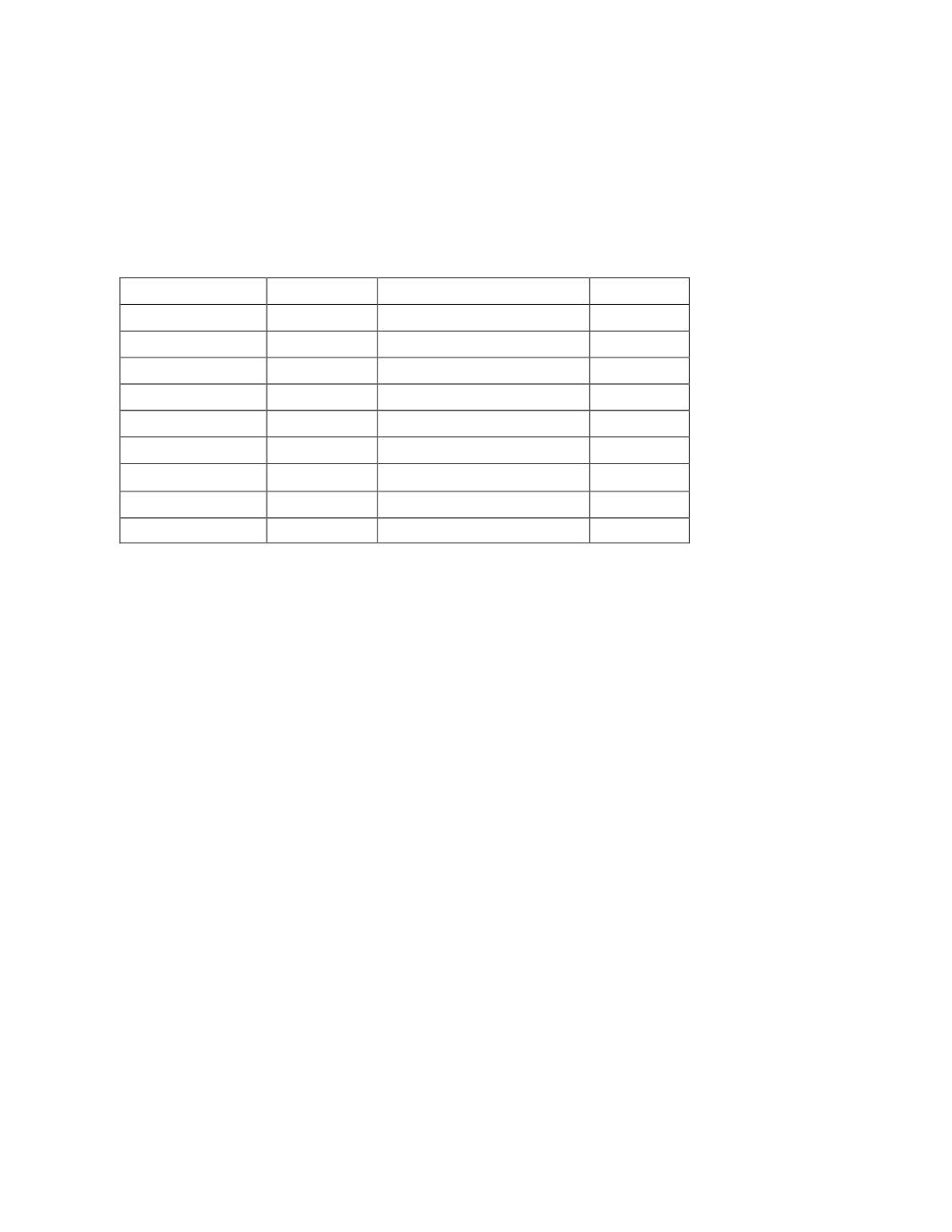

Ref. No. [UMCES] CBL 2016-016
ACT VS16-07
26
Individual response slopes and intercepts of instrument versus reference DO for each of the
laboratory trials are summarized in Table 4. There were no clear differences in instrument
response slopes as a function of temperature or salinity, with the exception of a noticeably lower
slope and more positive intercept for the 15
o
C and 10 salinity trial.
Table 4.
Summary of regression statistics for the Troll 9000 versus reference sample response curves for
each of the nine laboratory trials.
Test ID
R2
y Intercept
Slope
LT15S00
0.998
-0.013
1.001
LT15S10
0.984
0.248
0.889
LT15S35
1.000
-0.106
0.996
LT04S00
1.000
-0.062
1.027
LT04S10
1.000
-0.090
1.027
LT04S35
1.000
-0.055
0.988
LT30S00
1.000
-0.063
1.006
LT30S10
1.000
-0.113
1.014
LT30S35
1.000
-0.041
0.985
Results of the 56 day long-term stability and thermal stress challenge for the Troll 9000 are
shown in figure K. The instrument was maintained in a well circulated tank and oxygen content
manipulated by alternately varying water temperature set point between 15 and 25
o
C several times
per week of deployment. The data completion result for the stability test was 100%. The time
series of instrument readings at 15min intervals is plotted against discrete values for Winkler
reference samples (
top panel
) along with the time series of the difference between instrument and
reference measurements (
bottom panel
). The overall mean difference between measurements was
-0.040 (s.d. = 0.517) mg/L for 75 comparisons. There was no significant trend (linear regression r
2
= 0.009, p=0.41) in accuracy over time that would indicate performance drift; however the
magnitude of offset clearly increased after approximately 30 days.
Results for a sensor response time assessment of the Troll 9000 are shown in figure L. The
top panel depicts the time series of 10s instrument reads during transfers between adjacent high
(9.6 mg/L) and low (2.0 mg/L) DO water baths, maintained commonly at 15
o
C. The bottom panel
(
lower left
) depicts results fit with a 3 parameter exponential decay function: DO
rel
= DO
relMin
+ a
e
-
bt
and indicated τ calculated from fit. Data for low DO to high DO transitions (
lower right
) were
treated similarly but normalized to steady state value in subsequent high DO tank and subsequently
fit with an analogous 3 parameter exponential rise function: DO
rel
= DO
relMin
+ a(1-
e
-bt
) with
indicated τ being directly calculated from fit. The calculated τ
90
was 52 s during high to low
transitions and 48 s for low to high transitions covering a DO range of approximately 8 mg/L at a
constant 15
o
C.
















